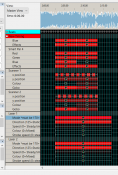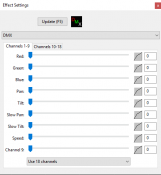DavidJ247
Full time elf
Planning to use a few stage/club style dmx lights in my display controlled by xlights and by messing around and setting up a few fixtures lately I've come to realise there must be a number of different ways to setup and control these types of lights and I'm keen to see how others are doing it. I figure the best way to start a discussion is to share my current configuration and hopefully others will do the same and we can share our experience and advice.
View: https://youtube.com/watch?v=4HCm0JHvkNE
View: https://youtube.com/watch?v=4HCm0JHvkNE




